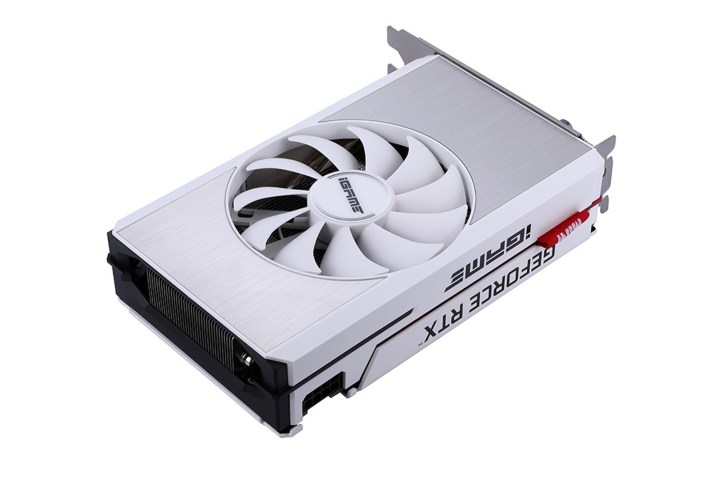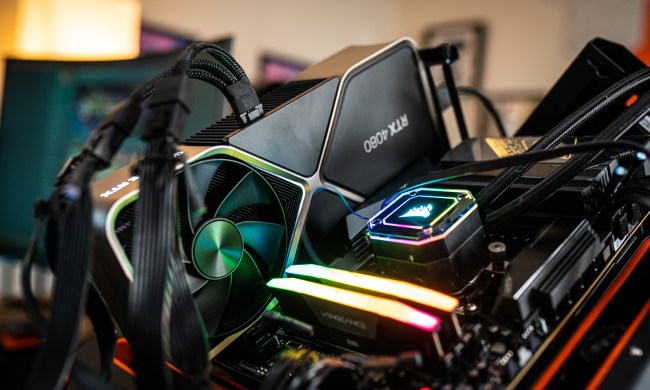Colorful, a Chinese hardware brand, has unveiled a new graphics card — the iGame Mini RTX 3060. The card is a Mini ITX GPU that has an incredibly stylish design, fitting for those who are trying to build the nicest looking PC without sacrificing the specs.
It’s impossible to deny that the iGame Mini has an eye-catching design that stands out at the first glance. The card is small, being a Mini ITX GPU, but it looks fantastic. With a large white fan in the middle and a silver-colored shroud, Colorful’s new release will be a treat for the fans of all-white or monochrome PC builds. While the front is a mix of white and silver, the sides and the backplate are both black. This creates a sleek look that breaks away from the usual “gaming GPU” design that we often see in the best graphics cards on the market.

The card is more than just a pretty box, and as far as the RTX 3060 technology goes, it packs a decent set of specifications. It runs on the Ampere GA106 GPU core with 3584 CUDA cores. It has a base clock of 1320MHz that can be boosted up to 1777MHz. However, it can be boosted a little further, up to 1792MHz, with the use of a knob at the IO panel, also referred to as “one-click OC.” In addition to that, the iGame Mini features 12GB of GDDR6 memory that runs at 15Gbps with 360Gbps of bandwidth.
The new Mini series was created specifically for ITX users with the purpose of delivering powerful performance within a very compact piece of hardware. The GPU measures 182mm in length and takes up two slots in height. The central heatsink within the card has four 6mm heat pipes inside the aluminum fin array heatsink block. It’s cooled by one 11-blade fan.
Colorful’s iGame Mini RTX 3060 features a single 8-pin connector with a TDP of 170W and has a recommended power supply of at least 550W. Like many new Nvidia RTX 30-Series cards, the iGame Mini also features a lite hash rate limiter (LHR). This is hinted at in the full name of the card: “iGame GeForce RTX 3060 Mini OC 12G L”, where the L represents the LHR technology. The use of LHR ensures that this card is not viable for mining Ethereum and other cryptocurrencies, with the ETH mining potential estimated at 25 MH/s.

Colorful is one of the dominating computer hardware companies on the Chinese market, covering products such as motherboards, graphics cards, all-in-one PCs, and more. On the worldwide market, the brand is known for its unique designs. Colorful has recently released another iGame version of the RTX 3060, the extremely cute iGame GeForce RTX 3060 Bilibili E-Sports OC.
The new iGame Mini RTX 3060 is likely to only be sold within the Asia-Pacific markets. While no price has been announced yet, it’s likely that this GPU won’t be sold cheap. This is both due to the current market situation as well as the uniqueness of the card. PC builders can expect to spend around $500 in order to snag one of these graphics cards.



